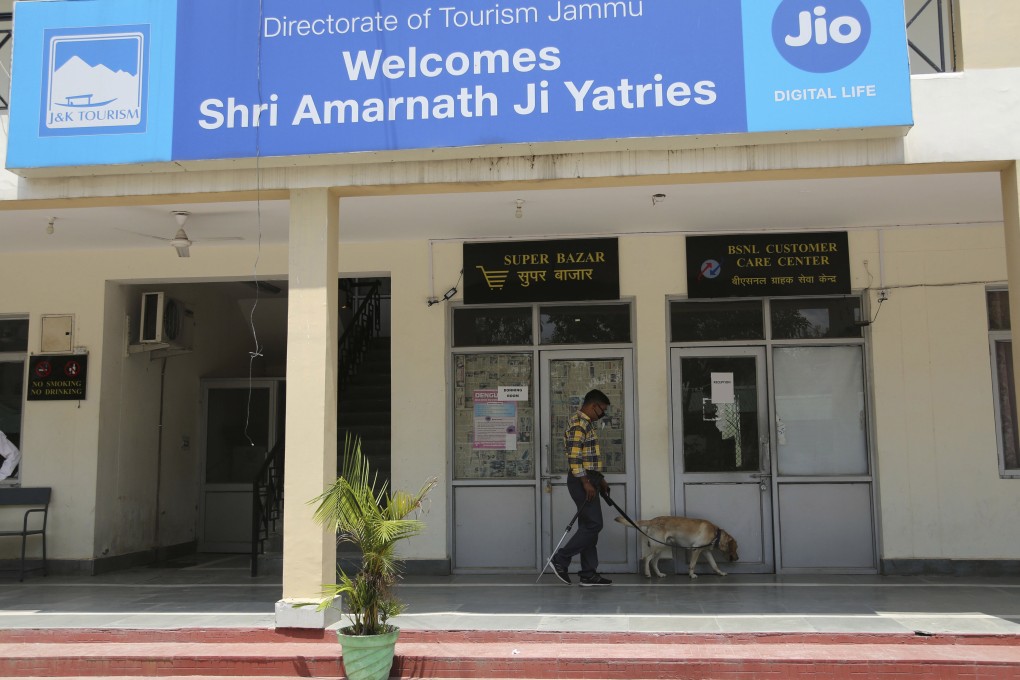India allows Kashmir pilgrimage to go ahead despite Covid-19 risks
- Public health experts are concerned about the potential spread of the disease in a region with overstretched medical facilities and more than 9,000 cases
- They say there is still a risk of transmission, even though the authorities have limited the duration of visits to the Amarnath cave and the number of people allowed

Several Indian states have banned interstate travel and placed restrictions on opening businesses and other establishments to contain the spread of the disease.
Dr Anant Bhan, a researcher in global health, bioethics and health policy based in New Delhi, said any sort of large gathering should be avoided.
“It has been well established that any sort of unnecessary travel should be avoided at this time. But if the government has decided to go ahead with the pilgrimage for religious reasons, it must ensure there are proper procedures laid out to minimise the spread,” he said. “Still, there is certainly going to be a risk of transmission involved.”

01:23
India’s coronavirus case count now third-highest in the world, but death rate remains low
The Amarnath cave, located almost 3,900 metres above sea level in the Lidder Valley, is considered to be a shrine of the Hindu deity Shiva. To reach the cave, pilgrims have to make an arduous 24km trek by foot. A number of pilgrims have died in recent years due to landslides and health issues caused by changes in altitude.
According to a report in the Hindustan Times, 1,000 pilgrims will be allowed to visit the holy cave by helicopter every day, while another 500 pilgrims will be allowed to make the trek on foot. The pilgrimage, or yatra, which is likely to start from July 21, will be limited to 15 days this year.